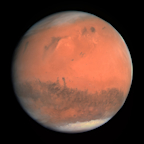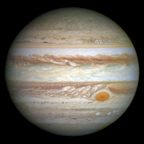Search results
3 days ago · Venus is the second planet from the Sun. It is a terrestrial planet and is the closest in mass and size to its orbital neighbour Earth. Venus is notable for having the densest atmosphere of the terrestrial planets, composed mostly of carbon dioxide with a thick, global sulfuric acid cloud cover.
6 days ago · Venus, second planet from the Sun and sixth in the solar system in size and mass. No planet approaches closer to Earth than Venus; at its nearest it is the closest large body to Earth other than the Moon.
6 days ago · Earth and its "evil twin" Venus are very different today, with the latter lacking plate tectonics. New research indicates Venus may have been much more like our planet than we suspected.
6 days ago · 5,000-Mile Wall of Acid Clouds Reappears on Venus: 'Not Certain What It Is'. Above the core and below the crust lies Venus’s mantle, making up the bulk of the planet’s volume. Despite the high surface temperatures, temperatures within the mantle are likely similar to those in Earth’s mantle.
6 days ago · Venus - Atmosphere, Greenhouse, Gases: Venus has the most massive atmosphere of the terrestrial planets, which include Mercury, Earth, and Mars. Its gaseous envelope is composed of more than 96 percent carbon dioxide and 3.5 percent molecular nitrogen.
6 days ago · Computational simulations of Venus’s geodynamics show the formation of large tessera plateaus. Matching of the models with spacecraft orbiter data constrains the mechanism that may have formed ...
4 days ago · Venus and Earth seem like twins who, through dramatically different circumstances and choices, ended up leading dramatically different lives. Earth is bountiful and welcoming, with a soft, safe atmosphere, sloshing oceans, forgiving temperatures, and land masses carpeted with growth. Venus is choked by clouds of toxic gas, rains acid, has ...




















